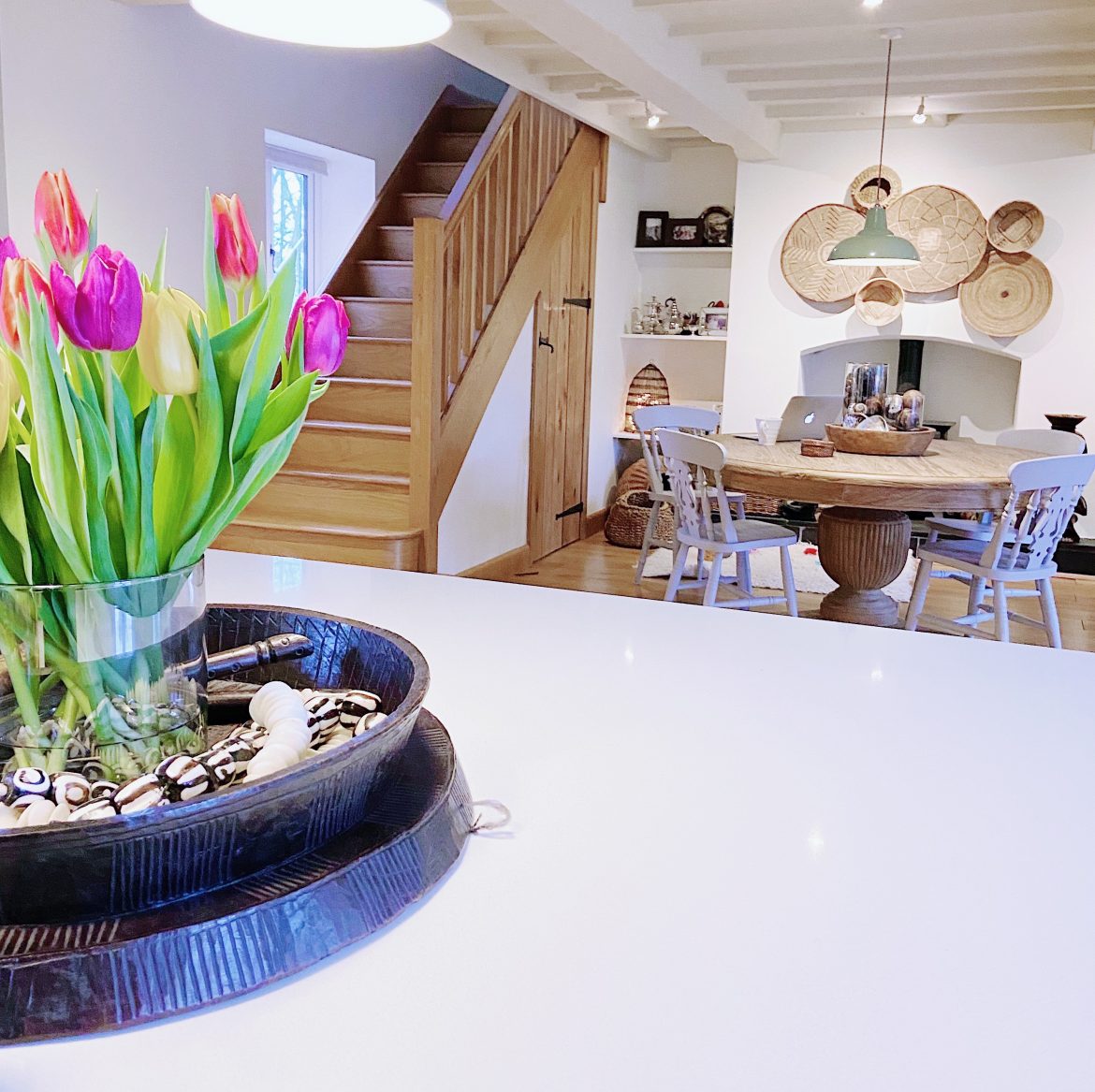After moving in and taking our first steps towards sustainability, we started to monitor our daily electricity consumption, and we saw significant spikes in the evenings. After looking into it, we discovered that the culprits were the spotlights in our kitchen, living room, hallway and TV room.
We have 38 spotlights in total, and the previous owners had a 35W bulb in each one, so when we turned the lights on in the evening, our consumption jumped by over 1kWh, which over the course of a winter evening was typically over 6kWh. This was just crazy and unsustainable as we were spending almost £1 a day just to keep the downstairs lights on.
The decision to switch to LEDs was an obvious one, but the challenge was finding a dimmable, warm (yellow) LED bulb. After scouring the market, we found a dimmable, 2700K, GU10 bulb from Crompton, and we replaced the bulbs at a cost of around £200, which sounds like a lot of money, but we were able to recoup this in savings over the course of 6-7 months.

We’ve now had these bulbs running for two years, and the financial savings have been significant. The savings were as a direct consequence of a reduction in electricity, which means the bulb replacement has also had a positive impact on the environment as we are now using about 85% less power.
Apart from the reduction in electricity consumption, there are other benefits to switching to LEDs. LED bulbs have a significantly longer lifespan than conventional bulbs. Since switching we’ve not had to replace a single bulb, and they’re still going strong. This means less bulbs are going to landfill.
What’s also really great about LED bulbs is that they don’t contain any hazardous materials, so they are much safer for the environment when they are disposed of.
Taking all the above into account, we have forged ahead with LED bulbs, and all our reading and ambient lights and lamps have also been replaced by LED bulbs.
In order to make things even more sustainable and efficient, we have connected all our lamps to Eve Energy smart plugs. We have programmed these smart plugs to automatically turn our lamps on at sunset (just as it starts to get dark) and go off when we go to bed.
We have also placed one Eve Flare smart LED lamp in the kitchen and one in the entrance hallway where they cast ambient light on dark days or when the sun goes down. As an experiment, we ran the Eve Flare for 12 hours at full brightness on a dark, gloomy day, from 10am to 10pm, and it consumed just 12 watts (1 watt an hour) of electricity, which is incredible.

We’ve been so impressed by the Eve Flare that we are in the process of fitting Eve strip lights in our kitchen cabinets. These lights are awesome because they can use Apple HomeKit’s adaptive lighting feature. A review will be available as soon as they’re up and running. Watch this space.
If you’re debating whether you should replace your incandescent or halogen bulbs to LED, you should definitely do it because you’ll be contributing to a reduction in CO2 emissions and save money in the process.
Disclaimer
We were contacted by Eco Lighting Specialists to write about our experience switching to LED bulbs and how it fits in with our sustainability objectives so that we can help create awareness about the benefits of switching to LED bulbs and lighting. This is a sponsored post, but everything that has been written is completely accurate and based on our experience.
